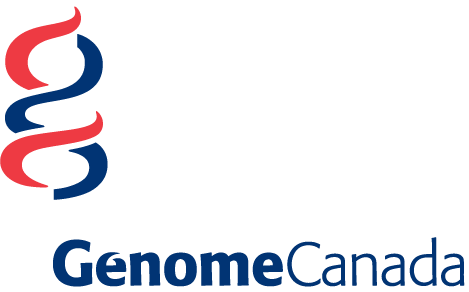A GENOMIC PLATFORM TO MAXIMIZE BREEDING VALUE OF GENETIC RESOURCES | 2018 Large-Scale Applied Research Project Competition (2019-2024)
Phenotypic and exome capture sequence based SNP data for the wheat diversity panel of 141 accessions
Phenotypic Data
Diversity Panel:
The panel includes 141 accessions that encompass 26 different species of cultivated wheats, synthetic hybrid wheat (SHWs), progenitor species and wild relatives (See the table below). this panel is a subset of : a subpanel of 385 accessions genotyped using wheat 90K array.
The information of all accessions in the panel is included in the file:141_accessions_wheat_diversity_panels_info.xlsx.
Summary of accessions in the genetic panel
| Genome | Species | Category | Ploidy | Growth habit | No. of accessions |
|---|---|---|---|---|---|
| Sb | Ae. bicornis | Wild relative | Diploid | Winter | 2 |
| UM | Ae. biuncialis | Wild relative | Tetraploid | Winter | 2 |
| UM | Ae. columnaris| Wild relative |
Tetraploid |
Winter |
2 |
|
| M | Ae. comosa | Wild relative | Diploid | Winter | 1 |
| DM/DDM | Ae. crassa ssp. crassa | Wild relative | Teraploid/Hexaploid | Winter | 1 |
| DM/DDM | Ae. crassa ssp. vavilovii | Wild relative | Teraploid/Hexaploid | Winter | 1 |
| DC | Ae. cylindrica | Wild relative | Tetraploid | Winter | 2 |
| MU | Ae. geniculata (=ovata) | Wild relative | Tetraploid | Winter | 2 |
| DMU | Ae. juvenalis | Wild relative | Hexaploid | Winter | 2 |
| Sl | Ae. longissima | Wild relative | Diploid | Winter | 2 |
| C | Ae. markgrafii (=caudata) | Wild relative | Diploid | Winter | 1 |
| SU | Ae. peregrina (= variabilis) | Wild relative | Tetraploid | Winter | 2 |
| Ss | Ae. searsii | Wild relative | Diploid | Winter | 1 |
| Ssh | Ae. sharonensis | Wild relative | Diploid | Winter | 1 |
| S | Ae. speltoides | Progenitor or closely related species | Diploid | Winter | 4 |
| D | Ae. tauschii | Progenitor or closely related species | Diploid | Winter | 15 |
| UC/CU | Ae. triuncialis | Wild relative | Tetraploid | Winter | 1 |
| U | Ae. umbellulata | Wild relative | Diploid | Winter | 2 |
| DN | Ae. ventricosa | Wild relative | Tetraploid | Winter | 1 |
| V | Haynaldia villosa | Wild relative | Diploid | Winter | 1 |
| ABD | T. aestivum | Synthetic Hexaploid Wheat | Hexaploid | Winter-Winter | 59 |
| Am | T. monococcum | Progenitor or closely related species | Diploid | Winter | 5 |
| AtG | T. timopheevii | Wild relative | Tetraploid | Winter | 2 |
| AB | T. turgidum | Domesticated or cultivated wheat | Tetraploid | Spring | 25 |
| A | T. urartu | Progenitor or closely related species | Diploid | Winter | 1 |
| GAAm | T. zhukovskyi | Wild relative | Hexaploid | Winter | 2 |
Phenotypic data:
Field evaluation:
Phenotyping of disease resistance and other agronomic traits was performed in separate field trials for the spring and winter panels. Trials for the spring and winter panels were carried out in several locations.
For each panel, year and location, a completely randomized design with two replicates was used, except for several trials.
LR race-specific response:
Consecutive inoculations with six P. triticina isolates were performed for 360 accessions of the panels. All tests were performed under controlled greenhouse conditions at the Morden RDC, AAFC (Morden, Canada). Briefly, test lines and the Thatcher and Emerson check lines were sown into fiber trays at a rate of approximately 5 seeds per clump and 3 cm between clumps, which were inoculated with individual P. triticina isolates at the two-leaf stage as described by McCallum and Seto-Goh (2006). The isolates tested were 12-3 MBDS, 128-1 MBRJ, 74-2 MGBJ, 11-180-1 TDBG, 06-1-1 TDBG, and 77-2 TJBJ, which represent the prevalent leaf rust race groups across Canada (McCallum et al., 2016). Virulence and avirulence formulas for these isolates are given. Infection type (IT) was rated 12 days post-inoculation using a 0–4 scale (Stakman et al., 1962), where “;” = hypersensitive flecks, “0” = no uredinia or macroscopic sign of infection, “1” = small uredinia with necrosis, “2” = small to medium uredinia with chlorosis, “3” = medium uredinia without chlorosis or necrosis, “4” = large uredinia without chlorosis or necrosis. IT “;” and “0” to “2” were considered resistant, while “3” and “4” were considered susceptible (Long and Kolmer, 1989). The “+” or “−” IT qualifiers indicate larger or smaller than average uredinia, respectively. The “ = ” IT qualifier represents the lower size limit of the uredinia for the IT (Long and Kolmer, 1989). Plants with randomly distributed uredinia of variable sizes, or mesothetic response, were considered resistant and were rated with an “X” IT (Roelfs and Martens, 1988).
Phenotypic data files
| Panel | Traits | Year | Location | Data file download link |
|---|---|---|---|---|
| Spring + winter | LR, FHB, PM, Agronimic traits (awn, height, days to heading, days to maturity, lodging, yield, TKW) | 2016, 2017, 2018, 2019, 2020, 2021, 2022 | PEI, LTB, OTT, SKT, MDN | 141_accessions_2016_2017_2018_2019_2020_2021_2022_DivPanelS+W_LR_FHB_AGR_PM_Summary.xlsx |
| Spring + winter | LR infection type (IT) scoreand converted linear scale (1-9) | 2019, 2021 | MDN, indoor | 141_accessions_LR_IT_scores_Stakman_and_linear_scale.xlsx |
LR: leaf rust; FHB: Fusarium head blight; PM: powdery mildew;
TWK: thousand kernel weight; TSW: thousand seed weight.
MDN: Morden, Manitoba; OTT: Ottawa, Ontario; SKT: Saskatoon, Saskatchewan,
PEI: Prince Edward Island; LTB: Lethbridge, Alberta.
LR: leaf rust; FHB: Fusarium head blight; VRI:visual rating index; DON: mycotoxin deoxynivalenol.
MDN: Morden, Manitoba; OTT: Ottawa, Ontario; SKT: Saskatoon, Saskatchewan.
Exome capture sequencing based SNP data of the wheat diversity panel will be available soon.

